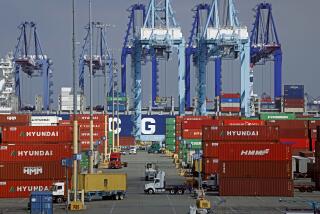The Hawaii Economy
- Share via
Hawaii’s economy, which has been in the doldrums since the early 1990s, is getting a boost from strong growth in tourism and is expected to recover slowly this year. However, the rebound will be partially offset by declines in construction. Hawaii’s downturn--blamed on dwindling tourism, shrinking real estate investments and fading industries such as sugar cane--was the largest recession since the islands became a state in 1959. A brief look at Hawaii’s economy today:
Tourism
No other Hawaiian industry comes close to tourism in contributing to the state’s economy. Although the U.S. recession led to a drop in tourism for the first time in decades, from a high of nearly 7 million visitors in 1990 to 6.5 million in 1994, the industry remains the country’s strongest choice for job and economic growth. It is expected to contribute $9.2 billion to the state’s economy this year and to supply about 172,000 jobs, almost one in three jobs in the state.
Construction/Real estate
Economic growth in Hawaii has suffered a three-year lull in part because of a drop in Japanese investments, which plummeted from a high in 1991 of $2.3 billion to $633 million in 1992. The state, which had received a quarter of the Japanese investment in the U.S. from 1985 to 1990, watched its hotel and luxury home prices nose-dive while vacancy rates for prime office space in downtown Honolulu rose 17%. Because the country is now overbuilt in offices and condos, little construction growth is expected. The number of building permits issued in the first quarter declined 16% compared with the same period a year ago.
Agriculture
The sugar industry, which helped mold Hawaii’s social and political fabric, is shrinking in importance to the state’s economy. The number of workers has fallen from about 9,000 a decade ago to about 2,000 today. Job losses are especially critical on smaller Hawaiian islands, where the sugar industry has been an economic mainstay for entire regions. Several of the largest plantations have shut down in the last two years, leaving officials from the state-sponsored Hawaiian Sugar Planters Assn. scrambling to find new crops and uses for land. The state’s some 4,800 farmers produce more than 250 crops and livestock commodities other than sugar cane including fruits, tropical flowers, macadamia nuts, vegetables and cattle.
Public-sector jobs
Hawaii faced an unprecedented economic crisis in early 1995 thanks to federal cutbacks and a lingering recession in Japan and California--its projected deficit soared from $150 million to $750 million. Gov. Ben Cayetano ordered layoffs of about 1,300 state employees, about 11.3% of the state work force. The cuts worsened already poor job figures posted by the state, which has consistently lost jobs since 1992. The four-year string of losses, which continued when the state posted the weakest job performance in the U.S. for the 12 months ended in March (a loss of 1.8%), is expected to end by next year.
Unemployment
The unemployment rate has doubled since a recession hit the state in the early 1990s ...
Personal Income
... but per capita personal income also increased during that period
Tourism
... while tourism hit an all-time high and then fell for the first time in decades.
Sources: U.S. Bureau of Economic Analysis; Hawaii Visitors Bureau; Hawaii Department of Labor
More to Read
Inside the business of entertainment
The Wide Shot brings you news, analysis and insights on everything from streaming wars to production — and what it all means for the future.
You may occasionally receive promotional content from the Los Angeles Times.










